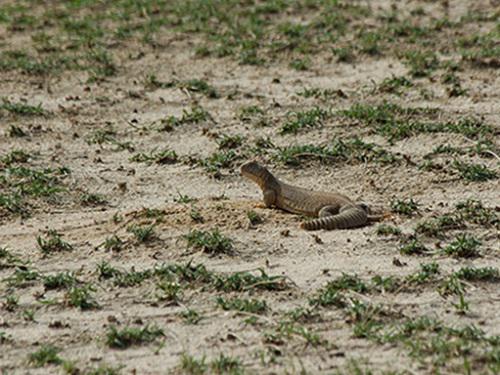Caleb Daniel Gnanaolivu
Other projects
5 Aug 2019
Understanding Tourism Impacts on Biodiversity towards the Conservation of Critical Habitats in the Andaman Islands
Invasive plant species are known to dramatically alter native vegetation composition, which in turn can have considerable bottom-up effects on herbivore populations. In the desert scrublands of India, an exotic desert shrub Prosopis juliflora was introduced about 100 years ago, and has now invaded a large portion of the landscape. Our study aims to understand the key ecological responses of the vulnerable herbivorous lizard, Indian Spiny tailed lizard (Saara hardwickii) towards the spread of Prosopis juliflora in an ecologically underappreciated landscape.

An adult Spiny tailed lizard (Saara hardwickii).
In different desert scrublands of Rajasthan, an exotic desert shrub Prosopis juliflora, was introduced about 100 years ago, and now has invaded a large proportion of the landscape. Prosopis juliflora is currently altering native vegetation composition in various districts in Rajasthan, thus may be affecting habitat structure and resource availability for a native herbivorous lizard, Indian spiny-tailed lizard (Saara hardwickii). This agamid, listed as vulnerable and a schedule II species, is the only herbivorous lizard species in India, warranting a need for immediate efforts to address this threat in order to conserve them.
Considering current initiatives by the local forest authorities to eradicate this invasive shrub, it is necessary to understand the role that P. juliflora plays in the lizard’s ecology, to aid better management strategies. We hypothesize that habitat structure and resource availability along the P. juliflora density gradient may directly affect population density and activity patterns of these lizards. Lizards living in areas with high densities of P. juliflora may have different diet composition than those living in areas with low P. juliflora which might affect their foraging effort and digestive efficiency. We propose to use standard field-ecology protocol, as well as current ecological tools, to examine these effects to the highest accuracy.